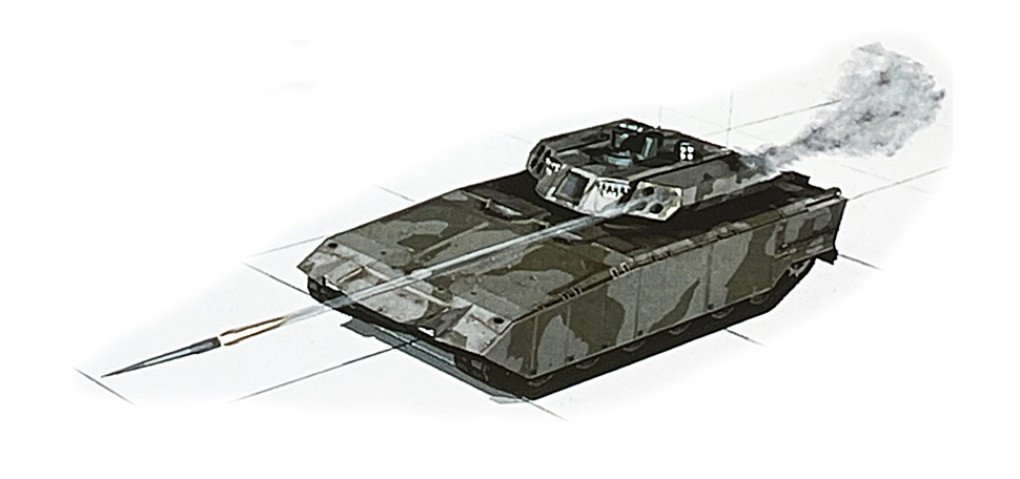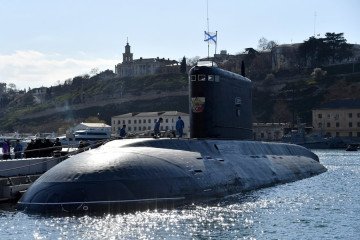- Category
- War in Ukraine
MGCS Tank Project, a Case Study in How Europe Is Stuck in Bureaucracy at a Time When Speed Wins Wars
-2cab28671f4a90a696c4669768fe6ef7.jpg)
Europe’s next-generation tank project, the Main Ground Combat System (MGCS), took eight years just to approve. Now, the platform for tanks, artillery, and infantry vehicles won’t hit serial production until at least 2045—already a decade behind schedule. A clear example of where Europe could and should move faster.
At the onset of Russia’s full-scale war against Ukraine, the Ukrainian navy was nearly nonexistent—just a handful of ships and a coast guard. The Russian Black Sea Fleet seized control almost instantly. And just as fast, it lost it. In just two years, Ukraine built a fleet of naval drones that took out a dozen Russian warships. Long-range missiles—both homegrown and supplied by allies—put an end to Russia’s maritime dominance in the Black Sea.
Adaptation happened fast. The war in Ukraine is high-intensity and constantly evolving. During one of my trips to the eastern front, I spoke with reconnaissance drone operators near Pokrovsk. The drone they were using came from a European supplier. Within a few months, Ukrainian forces had provided nearly 200 recommendations for improvements. Because real war is not a laboratory experiment—what works one day may be ineffective the next. Another example is FPV drones, once seen as a game-changer. However, with the rise of advanced electronic warfare (EW) systems, they are increasingly unreliable, prompting a shift to fiber-optic-controlled drones.
The speed of change is a crucial element of modern warfare. In his report to the European Commission, Mario Draghi , emphasized that Europe must move faster and cut through bureaucracy. The MGCS project is a prime example: eight years after its inception, it remains far from completion.
What is the Main Ground Combat System (MGCS)?
One of Europe’s primary battle tanks today is the Leopard 2A7 (along with earlier variants). The original version entered service in 1979—nearly 50 years ago. While it has undergone upgrades and modernization, the reality remains: this is a half-century-old tank. The idea for a new combat vehicle didn’t emerge in a vacuum—after the collapse of the Soviet Union, many assumed large-scale war in Europe was a thing of the past. But Russia’s invasion of Georgia in 2008, followed by its attack on Ukraine in 2014, proved otherwise. In response, several governments and defense companies concluded that a next-generation armored vehicle was necessary.
In 2017, France and Germany launched an initiative to develop a new tank, initially called the European Main Battle Tank, which was unveiled in 2018. Despite being marketed as an entirely new tank, it was based on existing designs—borrowing from both Germany’s Leopard and France’s Leclerc. The world was shown concept images and presented with the idea of a cutting-edge battle tank.

However, the project soon shifted from a standalone tank to a broader platform concept. The European Main Battle Tank evolved into the Main Ground Combat System (MGCS), intended to serve as the foundation for multiple armored vehicles, including armored personnel carriers and even self-propelled artillery. A prototype was approved in 2020—three years after the initial announcement.
Four companies were designated to lead development, two from each country: KNDS Germany, Rheinmetall, KNDS France, and Thales. It seemed like an agreement was in place and work could begin. But no.
Legal formalities stalled the project. Italy, Spain, the Netherlands, and Belgium—potential buyers—expressed interest in joining in various capacities, yet negotiations dragged on. The project stalled for years.
Ultimately, an agreement was only reached in January 2025—eight years after the initial announcement and five years after the concept presentation. On January 23, 2025, the creation of MGCS Project Company was announced in Paris, with France and Germany splitting ownership 50/50, giving each company a 25% stake.
Delays continue
When MGCS was first introduced, the timeline seemed clear: a prototype by 2028, with serial production by 2035. That would still leave a 60-year gap between the Leopard 2 and its successor—a massive delay compared to the usual 25-year cycle for new armored vehicles. But at least there was a concrete schedule.
Then, bureaucracy and prolonged negotiations intervened, leading to further delays. Today, there is no firm timeline—only a vague statement that MGCS will replace aging models by 2040. Some media sources suggest an even bleaker reality: mass production won’t begin before 2045.
Skeptics argue that by then, the vehicle will already be outdated. The rapid evolution of battlefield technology favors drones and entire drone-based warfare systems, fundamentally changing combat dynamics. Worse still, Europe has no alternative next-generation tank in development—only upgrades to existing platforms, and even those are not universally planned.
Military experts emphasize that tanks remain crucial in combat, particularly in offensive operations. The issue isn’t the necessity of tanks—it’s the glacial pace of development. Bureaucracy continues to outpace efficiency, delaying progress at a time when the most intense war in Europe since World War II is raging. Meanwhile, European leaders openly acknowledge that Russia could attack Europe next.
-29a1a43aba23f9bb779a1ac8b98d2121.jpeg)




-554f0711f15a880af68b2550a739eee4.jpg)